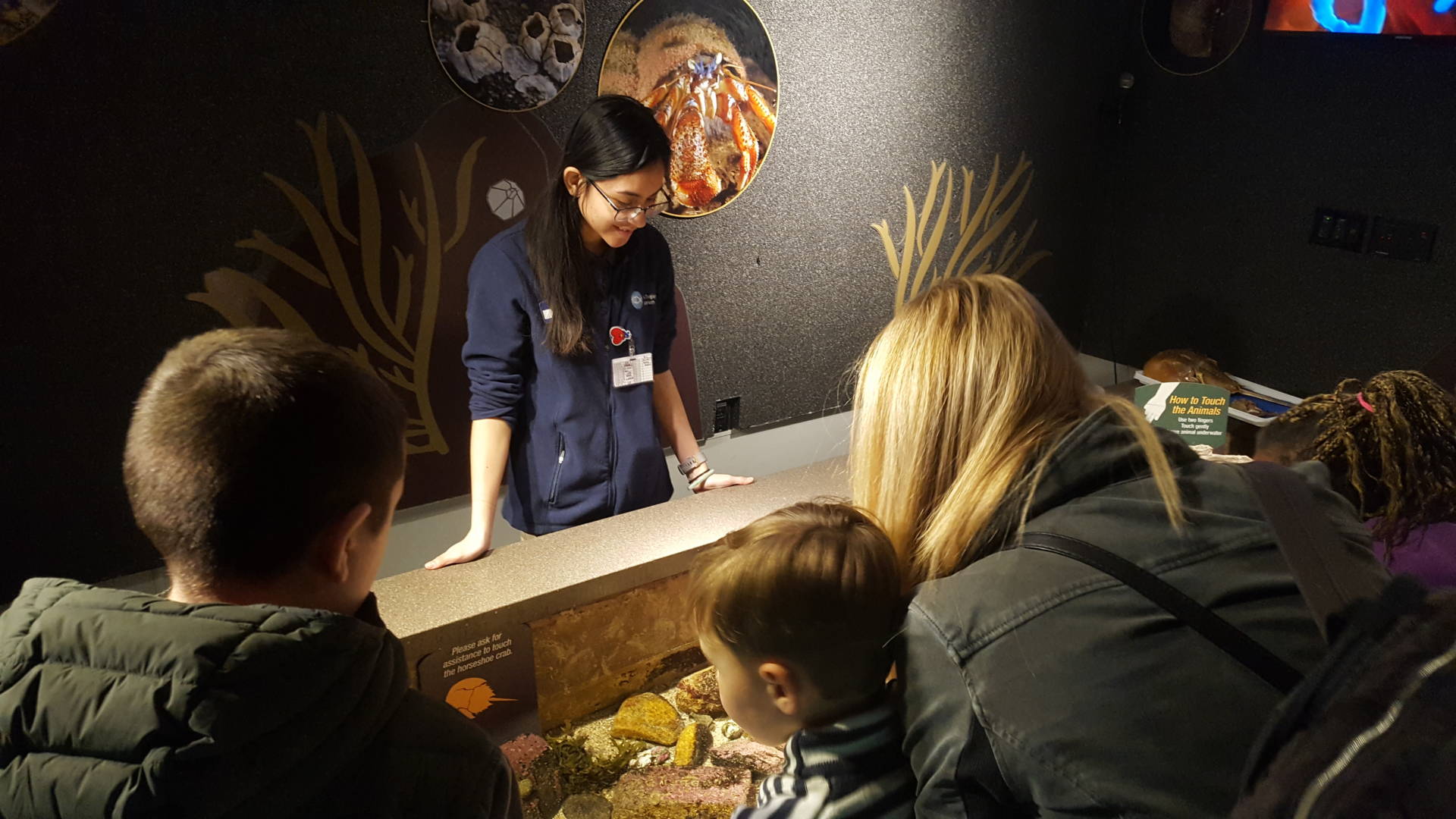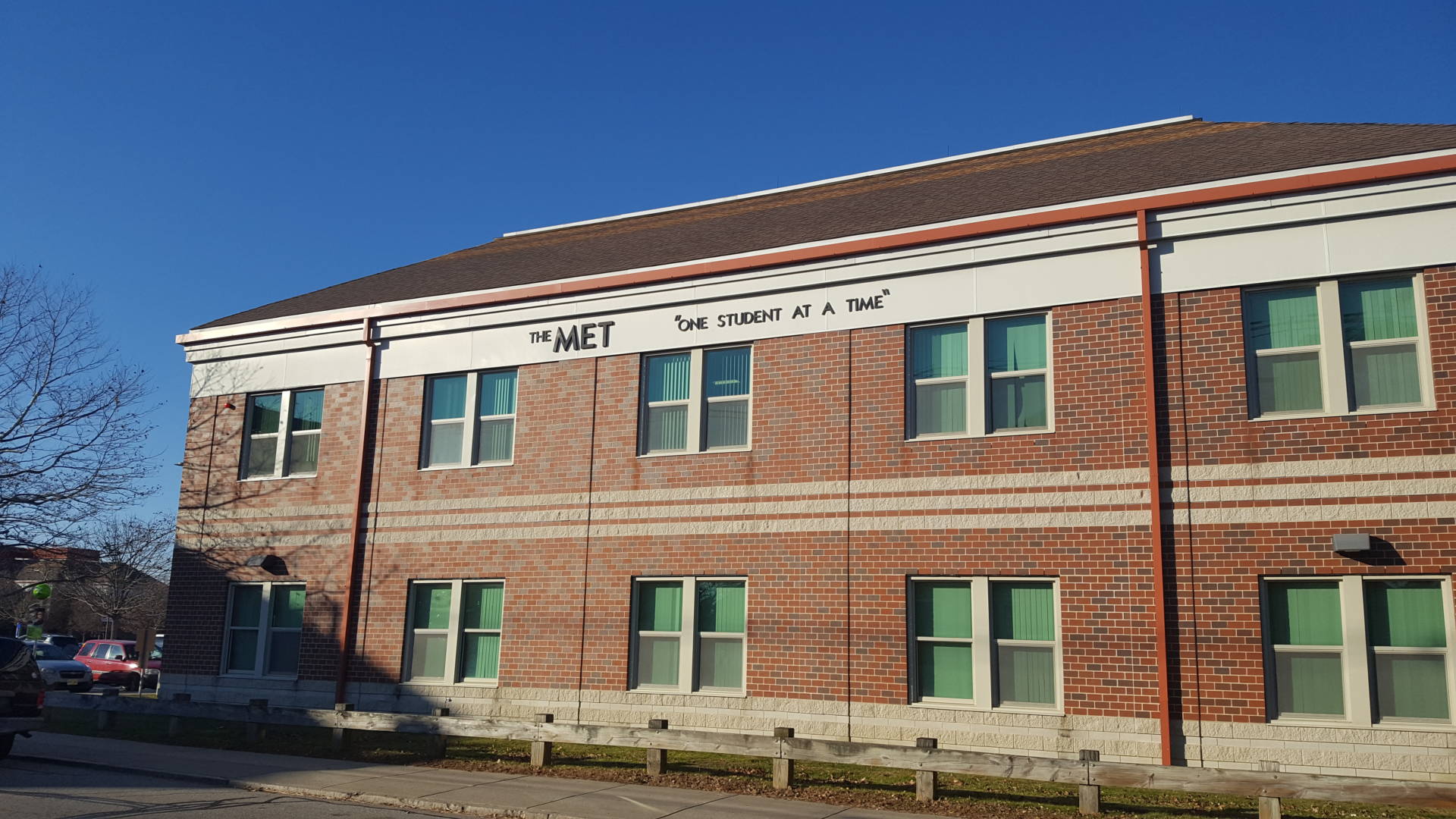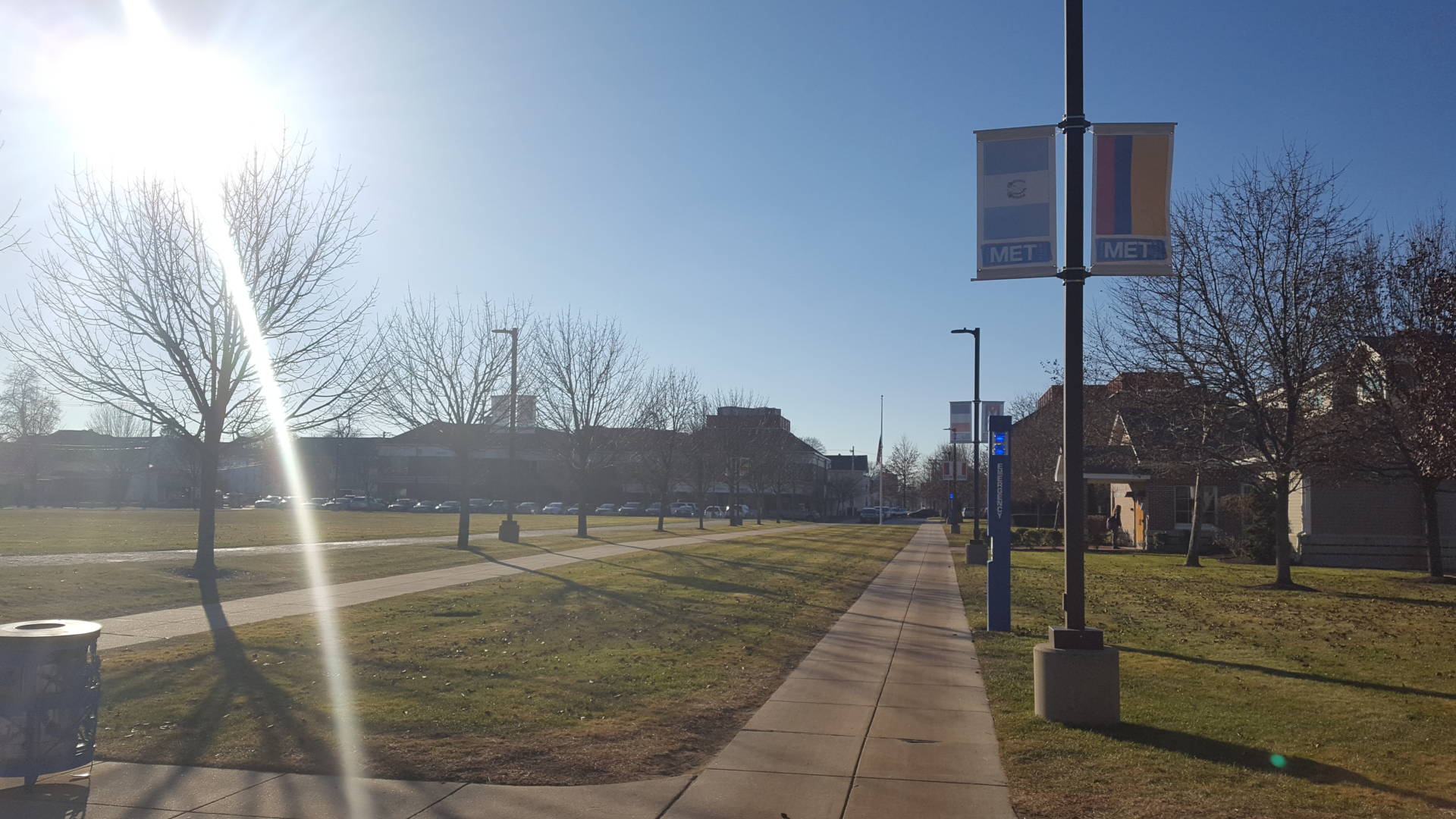Intrinsic Motivation is Key to Student Achievement – But Schools Can Crush It
Author: Ki Sung
Go to Source
This story about intrinsic motivation was produced by The Hechinger Report, a nonprofit, independent news organization focused on inequality and innovation in education. Sign up for the Hechinger newsletter.
PROVIDENCE, R.I. – When Destiny Reyes started elementary school, she felt highly motivated. Like most young children, she liked learning new things, and she excelled at school. She got good grades and reveled in her success, thriving in an environment that, at least implicitly, set her up in competition with her peers. She was at the top of her class, and she proved herself further by testing into a competitive, private middle school. But there, among Providence’s brightest, it wasn’t as easy to be at the top of the class, and her excitement about school – and learning – subsided. Eventually, she says, nothing motivated her. She went to school because she had to.
Destiny, 18, is like most students in the United States. Surveys reveal a steady decline in student engagement throughout middle and high school, a trend that Gallup deemed the “school engagement cliff.” The latest data from the company’s Student Poll found that 74 percent of fifth graders felt engaged, while the same was true of just 32 percent of high school juniors.
One of the key components of engagement is students’ excitement about what they learn. Yet most schools extinguish that excitement.
It all comes down to motivation. In many schools, students do their work because their teachers tell them to. Or because they need to do it to get a certain grade. For students like Destiny, getting a good grade and outshining their peers – not learning itself – becomes the goal of school. For other students, they need minimum grades to be on sports teams or participate in extracurricular activities or please their parents, and that becomes their motivation. Students who do their work because they’re genuinely interested in learning the material are few and far between.
But that’s exactly backwards.
The teacher demands, the grades, the promise of additional opportunities – they’re all external rewards. Decades of research, both about educational best practice and the way the human brain works, say these types of motivators are dangerous. Offering students rewards for learning creates reliance on the reward. If they becomes less interesting to the student or disappear entirely, the motivation does, too. That’s what happened to Destiny in middle school when she no longer got the reward of being celebrated as the top of her class.
Inspiring students’ intrinsic motivation to learn is a more effective strategy to get and keep students interested. And it’s more than that. Students actually learn better when motivated this way. They put forth more effort, tackle more challenging tasks, and end up gaining a more profound understanding of the concepts they study.
Still, Deborah Stipek, a Stanford University professor of education and author of the book “Motivation to Learn: From Theory to Practice,” is pragmatic about the role of extrinsic motivation.
“I think most realistic people in the field say that you’ve got to have both,” Stipek said. “You can rely entirely on intrinsic motivation if you don’t care what children learn, but if you’ve got a curriculum and a set of standards, then you can’t just go with what they’re interested in.”
The problem is that the balance, in most schools, is way off. While some schools around the country are trying to personalize learning and, in doing so, to tap into students’ interests, Stipek estimates that most teaching minimizes students’ internal desire to learn.

In traditional schools, it’s easier to offer a steady stream of rewards and punishments to keep students in line. And preparing students to succeed on state tests tends to discourage the lessons that let them explore their own interests. Teachers who want to inspire intrinsic motivation have to swim against the current.
That’s not the case everywhere, though. Destiny’s trajectory of diminishing engagement took a turn in high school. Instead of getting increasingly uninterested and disconnected from school, she became more engaged. That’s because she enrolled in the Metropolitan Regional Career and Technical Center, a public high school district in Rhode Island that goes by ‘The Met.’ She is now a senior.
The Met is at the extreme when it comes to tapping into intrinsic motivation. Students don’t take traditional classes. They spend virtually all of their time learning independently, with support from advisors or at internships. Students all have individual learning plans and accumulate credits toward traditional subject areas through projects, self-directed study, internship experience and dual enrollment with local colleges. Almost everything they do, all day, connects to a personal goal or something they’re interested in.
That’s what inspired Destiny to enroll at The Met. “I thought, oh my God, I have all this power to choose what I want,” she remembers.
Education researchers have been studying student motivation for decades, identifying the best classroom strategies to promote an intrinsic drive to learn. The Met puts many of them to use. Students learn through real-world, hands-on problem-solving; they tackle open-ended assignments that require sustained effort; they get the power to choose what and how they learn; they finish projects with something to show for their learning in portfolios and concrete products; they set their own academic goals; they need never focus more on a grade than the process of learning because they don’t get traditional grades. All of these things come straight out of playbooks for inspiring intrinsic motivation, including Stipek’s. And the impact on students can be profound.
Destiny started high school with the academic zeal she left middle school with – meaning very little. Her freshman-year report card reflected that. While The Met doesn’t give out traditional grades, students do get assessed on their mastery of the goals they set for each subject. The dominant note on Destiny’s report card from ninth grade is “meeting expectations.” She had very few instances of “exceeding expectations” and in some subjects, her mastery was only “in progress.” In her sophomore year, things started to shift, and “exceeding expectations” started to become a more common assessment. By junior year, Destiny exceeded expectations in almost every subject and “in progress” was nowhere to be found on her report card. Gone was the middle schooler who didn’t want to be in class. In her place was a driven young woman who again liked school.
Destiny’s experience is common for Met students. On state surveys, these students report being more interested in their coursework, more convinced that what they’re learning will matter to their futures, and more supported at school than their peers in almost every other district in Rhode Island. She and other students at The Met continually bring the conversation back to how much difference it makes to be in control of their learning.

Sarah McCaffrey, a 10th grader, appreciates the stark difference between The Met and her experience in middle school, “where it was just ‘Do this, this, this,’” she said. “I like more hands-on, where I’m in control, rather than you’re just going to tell me how to do it and then I do it. It’s more like I’m in charge.”
Marissa Souza, a 2017 graduate of The Met and now a sophomore at Rhode Island College, said she had similar motivations in high school. At The Met, she said, students set their own goals, based on their own assessments of their strengths and weaknesses, tied to the dreams they identify for themselves. “You’re more proud of your work because you know this was your goal,” she said. “You met your goal, you didn’t meet a goal that a teacher or principal made for you.”
“It really pushes you to be your best self,” Marissa said.
It tends to take a little while for students to rise to the challenge, though.
Beccy Siddons, Destiny’s advisor, considers watching that trajectory to be one of the most exciting parts of her job. As the main contact for an “advisory” of about 16 students who stay with her for their entire time at The Met, Siddons guides students through their internships, all of their academic work and, eventually, their college applications.
“Ninth graders who have spent their whole life being told what to learn, some of them don’t even know what they’re interested in because they haven’t been given the opportunity,” Siddons said.
That was Destiny as a freshman. Her first internship was at an elementary school in a bilingual classroom – a safe, familiar choice for the native Spanish- and English-speaker. In the end, she didn’t like it. As a sophomore, Destiny saw another student present about an internship at the New England Aquarium, and it piqued her interest. Last year, she worked there, too, and quickly discovered a deep love of sea life. She now has a favorite creature she didn’t even know existed before: the puffer fish. And she has a career interest she otherwise might not have found until college, if ever: environmental science.

Siddons routinely oversees such meandering paths, and a key part of her job is helping students discover passions they didn’t know they might have. The freshmen she welcomes to The Met are a far cry from the seniors she sends out into the world.
The early part of that transformation does take work, though. And while it isn’t typical for schools to orient themselves around intrinsic motivation, hundreds do attempt it. Next Generation Learning Challenges has grown into a network of about 150 schools, all of which focus on tapping into students’ intrinsic motivation in one way or another. The Digital Promise League of Innovative Schools represents 102 school districts doing similar work; EdLeader21 has another 300 districts, many of whom aim to inspire students’ intrinsic desire to learn. And the Big Picture Learning network, built around the success of The Met, now counts more than 60 schools in the U.S. (and another 100 abroad).
In Chicago, a charter school made its commitment to this goal very clear, choosing the name Intrinsic Schools when it launched in 2013 to serve students in grades seven through 12. Learning there happens in “pods,” large, flexible classroom spaces that let students rotate from independent work to group instruction to collaborative, project-based learning. Ami Gandhi, director of innovation and collaboration and a co-founder of the charter, said that in the first year, administrators blocked out “independent learning time” for students, expecting they would thrive with the period of freedom. Looking back, Gandhi calls that naïve.
“I would go into the pod during that time and kids were just sitting there,” Gandhi said. “I was like, ‘What are you interested in?’ ‘Nothing.’ ‘What do you want to explore?’ ‘Nothing.’”
“If someone’s been telling you what to do for nine to 10 years of your life in school, you really don’t know what to do with that independent time,” Gandhi said.
Teachers had to help equip students to take advantage of academic independence. At first, they didn’t give students open-ended choices. They told them what they should work on in the independent time. Then they gave them a menu of options, slowly working up to the point where students could choose for themselves, entirely. After the first-year’s naiveté, Intrinsic Schools teachers systematically prepare students to take control of their learning.
Another major challenge for schools trying to spark intrinsic motivation is to make sure that fun, engaging lessons also bring academic rigor. Several studies have found that projects and hands-on activities can be effective at intrinsically motivating students, but don’t actually result in substantive learning.
Stipek, the Stanford researcher, said this comes down to teacher preparation and school design. Teachers aren’t trained to design academically rigorous lessons that motivate students in the right way. And schools aren’t set up to give teachers the time to do so. It is possible, though. Stipek directed the UCLA Lab School for 10 years, and she said her teachers – experienced and highly trained – consistently planned projects that engaged students’ natural desire to learn while also forcing them to master concrete concepts and skills.
“It’s not that it can’t be done,” Stipek said. “It’s just really, really hard.”
And because it’s hard, it’s necessarily risky. Many teachers – and their bosses – are afraid to experiment with this work. Stipek said the accountability movement, where states hold schools to strict standards for student performance on standardized tests, put a damper on teaching methods that prioritize intrinsic motivation. She believes accountability is important, but, in its latest form, has prompted teachers to focus on test prep. That prioritizes the testing outcome – the grade – rather than the learning process, a surefire way to kill students’ sense of intrinsic motivation.
Researchers have found that one consequence of using grades to motivate students is that they stop challenging themselves for fear of trying something hard and failing at it. The hesitance of teachers and administrators to take a leap with new learning opportunities is an extension of the same thing.
Destiny’s school, though, breaks the mold.
Students don’t do particularly well on standardized tests at The Met. Rhode Island gives every school a star rating based on test scores, graduation rates and other metrics. The Met graduates more students than the state average (90 percent vs. 84 percent), but its rating, just two out of five stars, is dragged down by student achievement on state tests.
School leaders, though, don’t pay much attention to test scores. Nancy Diaz Bain, a co-director, said she and her colleagues prefer to keep track of state survey data about student engagement, parent feedback about their children’s progress, student behavior, graduation rates and student performance in college courses. When students from The Met take and pass college courses in high school – which all of them do – they not only prove they can handle advanced coursework, they save money on an eventual degree, Diaz Bain said. And the other metrics about student engagement and success persuade school leaders that the model works. They also persuaded the Bill & Melinda Gates Foundation to pour $20 million into helping Big Picture Learning expand The Met’s model to other schools and President Barack Obama to highlight The Met up as an example in a 2010 speech before the U.S. Chamber of Commerce. (The Gates Foundation is also one of the many funders of The Hechinger Report.)
For her part, Destiny feels prepared for what comes next. She’ll finish high school this spring and then pursue a bachelor’s degree. She plans to major in environmental science. While she knows her peers from traditional schools may have gotten a broader education, she expects the depth of knowledge she gained doing internships and related research projects will actually give her a leg up in college. And she’ll enroll armed with a sense of intrinsic motivation to learn new things that many of her peers lost a long time ago.
This story about intrinsic motivation in the classroom was produced by The Hechinger Report, a nonprofit, independent news organization focused on inequality and innovation in education. Sign up for the Hechinger newsletter.
